What Is the Ideal Charge Level for a 48 Volt Golf Cart Battery
Best Charge Level to Maintain a 48 Volt Golf Cart Battery
Maintaining the best charge level for your 48 volt golf cart battery is essential for ensuring long-term performance, avoiding premature wear, and saving money on replacements. Whether you use your cart for daily commuting or weekend recreation, understanding the charging needs of a 48 volt golf cart battery can help you extend its lifespan. In this comprehensive guide, we'll explore optimal charge levels, battery chemistry, charging habits, and expert tips for battery care.
- Understanding the Basics of a 48 Volt Golf Cart Battery
- Ideal Charge Levels for a 48 Volt Golf Cart Battery
- How Battery Chemistry Affects the 48 Volt Golf Cart Battery Charge Level
- Factors That Influence the Best Charge Level for a 48 Volt Golf Cart Battery
- Monitoring the Charge Level of a 48 Volt Golf Cart Battery
- Charging Habits That Prolong the Life of a 48 Volt Golf Cart Battery
- Storage and Maintenance Tips for a 48 Volt Golf Cart Battery
- When to Replace Your 48 Volt Golf Cart Battery
- Real-World Scenarios for 48 Volt Golf Cart Battery Charging
- Common Myths About Charging a 48 Volt Golf Cart Battery
- Tools to Help Manage 48 Volt Golf Cart Battery Charging
- Environmental Impact of Properly Charging a 48 Volt Golf Cart Battery
Understanding the Basics of a 48 Volt Golf Cart Battery
What Is a 48 Volt Golf Cart Battery
A 48 volt golf cart battery refers to a power system composed of multiple individual cells or batteries connected in series to deliver 48 volts of total output. It is commonly used in electric golf carts for efficient energy storage and drive performance.
Common Battery Types
Flooded Lead-Acid (FLA)
Absorbent Glass Mat (AGM)
Gel Cell
Lithium Iron Phosphate (LiFePO4)
Each type affects the optimal charge level and charging strategy of a 48 volt golf cart battery.
Ideal Charge Levels for a 48 Volt Golf Cart Battery
Recommended State of Charge (SOC)
For traditional lead-acid batteries, maintaining a charge between 50% to 90% is recommended. For lithium batteries, the best charge level is generally 20% to 80% for daily use.
Full Charge Voltage Range
Lead-Acid: 50.9V – 51.8V
Lithium: 54.4V – 58.4V
Charging beyond these levels regularly can reduce the longevity of your 48 volt golf cart battery.
>>See also How to Choose the Battery Brand with the Longest Lifespan
How Battery Chemistry Affects the 48 Volt Golf Cart Battery Charge Level
Lead-Acid Chemistry
Flooded lead-acid batteries need full charging to prevent sulfation. Avoid discharging below 50% and charge immediately after use.
Lithium Chemistry
Lithium batteries are less sensitive to partial charges. However, regularly charging to 100% may reduce cycle life. Keeping the 48 volt golf cart battery in the 20% to 80% range offers the best balance between capacity and durability.
Factors That Influence the Best Charge Level for a 48 Volt Golf Cart Battery
Usage Frequency
Daily Use: Keep the battery between 50%–90%
Occasional Use: Maintain at 70%–80%
Long-Term Storage: Keep at 50%–60% with periodic top-ups
Temperature and Climate
Extreme heat or cold can impact voltage readings and charge retention. Store your 48 volt golf cart battery in climate-controlled environments when possible.
Charger Quality
A quality smart charger that matches the battery chemistry will optimize charge levels and prevent overcharging.
Monitoring the Charge Level of a 48 Volt Golf Cart Battery
Voltage Readings
Using a multimeter or battery monitoring system:
48.0V: ~100% (lead-acid)
47.0V: ~75%
46.0V: ~50%
45.0V: ~25%
44.0V or lower: Recharge immediately
Battery Management Systems (BMS)
Lithium systems often come with a BMS that prevents overcharging or deep discharge, helping you maintain the ideal charge level.
Charging Habits That Prolong the Life of a 48 Volt Golf Cart Battery
Avoid Full Discharge
Discharging a lead-acid 48 volt golf cart battery below 50% or a lithium battery below 20% can significantly reduce its lifespan.
Don't Leave at 100%
Avoid leaving the battery fully charged for long periods, especially lithium types. Instead, recharge to about 80% if the cart won't be used immediately.
Charge After Each Use
For lead-acid batteries, charging after each use maintains efficiency and prevents sulfation. For lithium batteries, you can wait until around 30%–40% before topping off.
Storage and Maintenance Tips for a 48 Volt Golf Cart Battery
Off-Season Storage
If storing the cart for weeks or months:
Charge to 50%–60%
Disconnect or turn off the BMS
Store in a cool, dry place
Check charge every 30–60 days
Cleaning and Inspection
Keep terminals clean and check for signs of corrosion or physical damage. Inspect water levels in lead-acid batteries monthly.
When to Replace Your 48 Volt Golf Cart Battery
Signs of Battery Wear
Reduced range
Slower acceleration
Inconsistent voltage readings
Frequent recharging needs
Average Lifespan
Lead-Acid: 3–5 years
Lithium: 8–10 years
Keeping your 48 volt golf cart battery at its ideal charge level can delay the need for replacement.
Real-World Scenarios for 48 Volt Golf Cart Battery Charging
Scenario 1: Heavy Use at a Golf Course
A golf cart used daily for multiple rounds may require two charging cycles per day. In this case, avoid letting the battery drop below 40%, and top off when it hits around 70%.
Scenario 2: Occasional Weekend Use
For occasional users, maintaining the 48 volt golf cart battery around 80% is ideal. Top off before each use and after returning the cart.
Scenario 3: Seasonal Use Only
Charge to 60% before storing for winter. Check voltage monthly and recharge if it falls below 45%.
Common Myths About Charging a 48 Volt Golf Cart Battery
Myth: You Should Always Charge to 100%
Truth: This practice can stress lithium batteries. Stick to 80% unless maximum range is needed.
Myth: Let the Battery Fully Drain Before Charging
Truth: Deep discharge harms both lithium and lead-acid batteries. Avoid dropping below recommended thresholds.
>>See also Determining the Solar and Inverter Size Needed to Charge a Battery
Tools to Help Manage 48 Volt Golf Cart Battery Charging
Smart Chargers
Programmable and multi-stage chargers prevent overcharging and provide optimal charge profiles.
Battery Monitors
Track SOC, voltage, and current to know when it's time to charge. Some systems offer app integration for real-time monitoring.
Environmental Impact of Properly Charging a 48 Volt Golf Cart Battery
Less Frequent Replacement
Maximizing battery life reduces landfill waste and mining demand.
Improved Energy Efficiency
Keeping your 48 volt golf cart battery in the optimal charge zone ensures less energy is lost during charging and use.
The Best Charge Level for a 48 Volt Golf Cart Battery
The best charge level to maintain a 48 volt golf cart battery depends on usage patterns, battery chemistry, and storage conditions. In general, staying within the 50%–90% range for lead-acid and the 20%–80% range for lithium batteries provides the best results. Daily charging habits, environmental conditions, and quality equipment all contribute to battery health. By actively managing your 48 volt golf cart battery charge level, you can extend its lifespan, optimize performance, and minimize long-term costs.
By consistently maintaining the best charge level for your 48 volt golf cart battery, you ensure dependable power, lower replacement frequency, and better overall value from your golf cart.



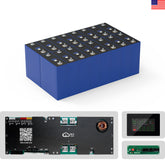

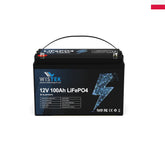
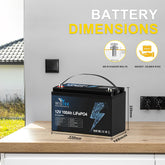

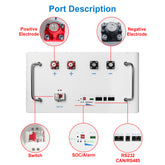
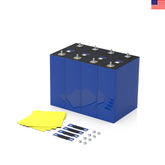
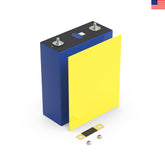
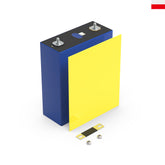

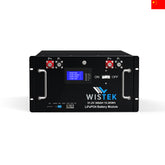
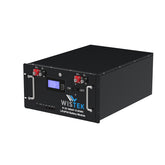









Leave a comment
All blog comments are checked prior to publishing